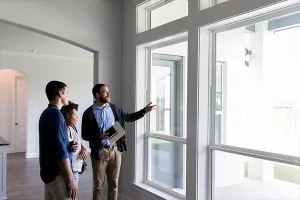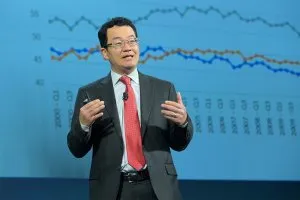Thinking globally, cities across the country are planning locally to stave off climate change and prepare for the weather extremes that come with it.
Some are primarily focused on mitigation: reducing their share of the carbon emissions. Others are more preoccupied with the effects they already are seeing, said Johanna Partin, director of the Carbon Neutral Cities Alliance, an international collaboration among the cities that have adopted the most aggressive mitigation plans. “For cities, adaptation means planning for increased flooding, increased heat, the urban heat island effect, doing what they can to prepare for increases in severe storms and other disruptions,” she said. And many cities are trying to plan for both mitigation and adaptation simultaneously.
“Everybody has a different reason for taking action,” said Kristin Baja, climate resilience officer of the Urban Sustainability Directors Network, most of whose 215 local government members are engaged in some level of climate planning. “Some are very focused on impacts to people as they see more and more the evidence that climate change is real, in the storms, flooding and wildfires that are growing in frequency.”
Others are seeing the writing on the wall with insurance companies and credit rating agencies. “Moody’s and Standard and Poor’s have said they will rate cities’ credit worthiness based on climate planning, and that has caught attention and is getting CFOs and politicians on board,” Baja added.
For cities, adaptation means planning for increased flooding, increased heat, and other disruptions.
While planning for adaptation is just taking hold, many larger cities have had, for several years, action plans to reduce their emissions. “A lot of what needs to happen is not controlled by cities,” Partin said, “so people ask, ‘Why cities?’ when they are the smallest level of government.
“But when the larger entities are missing the boat, we need the cities to act. And the threat feels real to them. When there is a flood or a fire people call the local government, not the federal.”
Local mitigation plans are as varied as cities themselves, but all share basic characteristics. “At the most basic level,” Partin said, “it’s the same challenges regardless of the city: reduce emissions from buildings, the power supply, transportation and waste. What changes is how large a proportion each sector contributes, and the strategies chosen to address each of them.”
Moody’s and Standard and Poor’s have said they will rate cities’ credit worthiness based on climate planning.
As summer temperatures have begun breaking records year after year and storms are coming fast and furious, adaptation planning has taken on greater immediacy. Although coastal cities were among the first to recognize the threat from rising seas and extreme weather, inland cities such as Detroit to Cleveland are now seeing the human cost of intensifying weather patterns. “We are seeing impacts now that are massive: intense rainfall, higher heat waves and consecutive days of heat,” Baja said. “In the real estate space, people are very concerned about impacts to high-value, coastal properties. But in many cities the most vulnerable people are being impacted right now by high heat and infrastructure failure.”
Cities with aging infrastructure — water, sewer and transportation systems — face a double whammy: Not only are facilities beginning to decay, but they were never designed for the intensity and frequency of rainfall nor for prolonged exposure to heat. “We see airport runways cracking because of the heat,” Baja said. “In Arizona, trash cans are melting in the heat. We are seeing sewers overwhelmed with stormwater and raw sewage going into our waterways.”
Feeling the effects of a changing climate in real time has in turn lent a renewed sense of urgency to mitigation efforts. At the same time, cities are realizing that their efforts must simultaneously solve other urban challenges, such as racial and socio-economic inequity, safety, livability and traffic, Partin said. Achieving those “co-benefits” relies on using the most powerful tools available to local governments: their capacity to shape transportation and regulate land use and the built environment.
Transportation emissions account for 42 percent of local carbon.
Pioneering Portland plateaus but pushes forward
Portland, Ore., in 1993, became the first U.S. city to adopt a climate action plan. Thereafter the Pacific Northwest city pioneered strategies around the growth of renewable energy from wind and solar power, investments in transit and biking infrastructure, creating denser and more walkable neighborhoods, tighter energy standards for buildings and transitioning from fuel oil to natural gas for heating.
The results have been impressive: Despite strong population and job growth, the city’s overall carbon emissions have dropped by 15 percent from 1990 levels, and per capita emissions plummeted 38 percent by 2017 — ironically, the same proportion by which population grew. However, a September progress assessment found that progress has stalled. The culprit? Growth in transportation emissions.
According to the report by the Portland Bureau of Planning and Sustainability, transportation emissions account for 42 percent of local carbon and are “increasing dramatically” from their low in 2012, to a level 8 percent higher than in 1990. That reversal is one reason Mayor Ted Wheeler in September moved toward declaring a climate emergency, with a call for the city council to update climate action plans with a set of measures being developed by the Bureau of Planning and Sustainability, said Andrea Durbin, who directs the bureau.
The actions are likely to address some of the areas thought to be part of the emissions rise: The growth in ride-hailing from “transportation network companies (TNCs)” such as Uber and Lyft, an explosion of delivery vehicle travel and a transit system that still relies on diesel buses. “Electric vehicles have to be more in the mix. The TNCs need to adopt electric vehicles,” Durbin said. “We need electric freight. We are seeing increases from online shopping. How do we ensure packages are delivered in a clean way?”
The city also needs to help people drive less. “We are talking to people about what are the barriers to taking transit,” Durbin said. “What is holding them back?”
An even bigger issue is the question of housing affordability, she said. As Portland has become more expensive, less-affluent workers have to drive farther out to find places they can afford to live, and too often, must drive to jobs in the city.
“A key part of our climate plan is changing zoning and development rules to expand housing options,” Durbin said, to encourage more housing on the 43 percent of the city’s land that currently is restricted to one house per lot.
“A key part of our climate plan is changing zoning and development rules to expand housing options,” Durbin said, to encourage more housing on the 43 percent of the city’s land that currently is restricted to one house per lot.
Seattle: Bringing social justice — and electricity! — to climate planning
Long cognizant of the threat from climate change, Seattle got a stark reminder of the urgency in 2017 and 2018, when wildfire smoke blotted out the sun for much of the summer and kept kids indoors while presenting health risks for vulnerable populations. Climate experts warned that this likely would be the new normal for many summers.
Though a decade or so behind Portland, Seattle has been a national leader in developing ambitious climate plans. With a goal of reducing carbon pollution 58 percent by 2030 and becoming carbon neutral by 2050, Seattle has seen emissions drop by 5 percent since 2008. But like its neighbor to the south, the city has seen emissions rise slightly in the last few years. And again, transportation is to blame. Road transportation accounts for a whopping two-thirds of Seattle’s greenhouse gas pollution (50 percent passenger vehicles, 16 percent freight). With a goal of reducing transportation emissions 82 percent from 2008 levels by 2030, Seattle has seen pollution from cars, trucks and planes level off and then rise.
Given the city’s historically rapid growth this decade — in some ways that is an achievement. Indeed, Seattle has been the only big city to see significant growth in transit ridership since the advent of app-based taxis like Uber and Lyft. The city has benefited from an urban growth strategy to steer growth to centers and corridors served by frequent transit, while expanding that network with light rail and “RapidRide” bus lines that come every five minutes at peak times. Voters also have approved special tax levies to purchase extra service from the county transit agency and to create bus by-pass or exclusive lanes in congested areas, with the aim of providing faster and more reliable trips for riders. The city also has been investing in protected bike lanes and safer streets for walking, and has seen increases in both walking and biking to work.
Congestion pricing, a fee on driving into the city’s core, could raise revenue for alternative forms of transportation.
While continuing to pursue a growth strategy of denser, walkable neighborhoods served by dependable transit and safe biking, under Mayor Jenny Durkan, the city is pinning hopes for significant progress on electrification of transportation, as well as home heating. “We are fortunate to have a renewable, non-carbon electricity source, thanks to cityowned hydropower,” said Jessica Finn Coven, director of Seattle’s Department of Sustainability and Environment.
The city has launched a major campaign to electrify the transportation system, dubbed Drive Clean Seattle. In addition to pledging to convert the city’s own fleet to all electric, Seattle has adopted codes requiring new parking garages to include electric vehicle (EV) charging and is pushing to electrify more of the city’s bus lines. The city also is developing public charging in the right-of-way for those who live in multifamily buildings or park on the street, with a 2019 goal of installing 20 sites that can charge an EV in 30 to 40 minutes.
“What separates Seattle is our longstanding commitment to our Race and Social Justice Initiative, to ensure that everything we do is focused on advancing racial equity,” said Finn Coven. That focus has led to some adjustments to the electrification plans.
“We thought leading with equity would lead us to ensure all neighborhoods would have access to charging infrastructure, not just wealthy neighborhoods,” Finn Coven said. “But some of our residents see public chargers as a precursor to displacement, and a lot of people can’t afford electric vehicles. So, we are looking at affordable EV car share. We also are partnering with [the transit agency] to electrify buses and putting emphasis on routes serving neighborhoods that have been disproportionately affected by pollution.”
Equity concerns also are a key focus of the ongoing analysis of Mayor Durkan’s proposal to explore “congestion pricing,” a fee on driving into the city’s core that, while discouraging solo motoring, could also raise revenue for alternative forms of transportation.
Finn Coven stressed, car-oriented development grew up over the course of several decades, and developing new patterns that are less car-dependent will take many years, as well. Meanwhile, car travel should be made as clean as possible as soon as possible.
Flood-ravaged Houston plans for resilience
When Tropical Storm Imelda inundated Houston with 40 inches of rain in a matter of hours in September 2019, it represented the fifth “500-year flood” in as many years. It came two years after Hurricane Harvey’s devastating floods, which prompted Houston to begin climate and resilience planning. “In this day and time, climate change is real,” Houston Mayor Sylvester Turner told The Houston Chronicle.
That was just a few weeks after the city released its first draft climate action plan for public review and comment. “Ten years ago, a mayor in Houston probably wouldn’t be talking about climate change …” Mayor Turner said at the time. “But things have changed. It’s a new reality, and now we have an obligation to respond in a responsible fashion.”
Perhaps it’s no surprise that a city known for its petroleum industry and super highways has among the very highest per capita carbon emissions in the country. In order to reverse course, the plan calls for shifting from Houston’s traditional fossil-fuel usage toward renewable energy, turning pavement into “green infrastructure” to handle stormwater, and helping residents and visitors drive less by making it easier and safer to walk, bike and use transit.
“The plan stresses the importance of building up and not out, recognizing that another million-plus people are expected in Houston over the next 20 years,” said Marissa Aho, Houston’s chief resilience officer. “How can we smartly accommodate that growth and increase mobility and safety and air quality?”
One idea that is gaining ground in Houston is the idea of green infrastructure, or using nature to slow, absorb and filter stormwater. In some cases, this could mean restoring or at least working with the low, formerly swampy areas and prairies that typically have been drained and paved. “We are looking at 22 watersheds for ‘bayou resilience’ — flood mitigation but also biodiversity,” Aho said. “We are looking for ‘co-benefits’: How can you address flooding, but also recreation and jobs.”
The plan stresses the importance of building up and not out.
Houston is considered the center of the “energy economy,” which used to mean fossil fuels exclusively. “We need to make sure that the next big thing in renewable energy, in carbon capture technology, in green technology comes from Houston,” said Lara Cottingham, the city’s chief sustainability officer. “That’s how we keep and maintain that proud leadership as the energy capital of the world.”
Letting others in on the action
Planning for a changing climate is increasingly grappling with the question of the haves versus the have-nots. “We see a lot of investment in bigger cities that can pull off big moves,” Baja said. “The cities able to lead right now are the ones that have the most resources and have been given more support. We have to figure out how to get more resources for this work to the less wealthy jurisdictions.”
The questions of equity that Seattle and other jurisdictions are increasingly orienting their planning around are the literal frontline of the next wave of planning. “Climate change is happening now and frontline communities, particularly low income and people of color, are being hit worst and first with flooding and heatrelated impacts, and that is a result of the way we have been conducting business for many years.
“People is the reason we are doing this work,” said Baja. “If we center human needs, we see that the most important things are housing affordability and safe transportation. Those are the same sectors you address from a scientific standpoint, but for different reasons.”





















